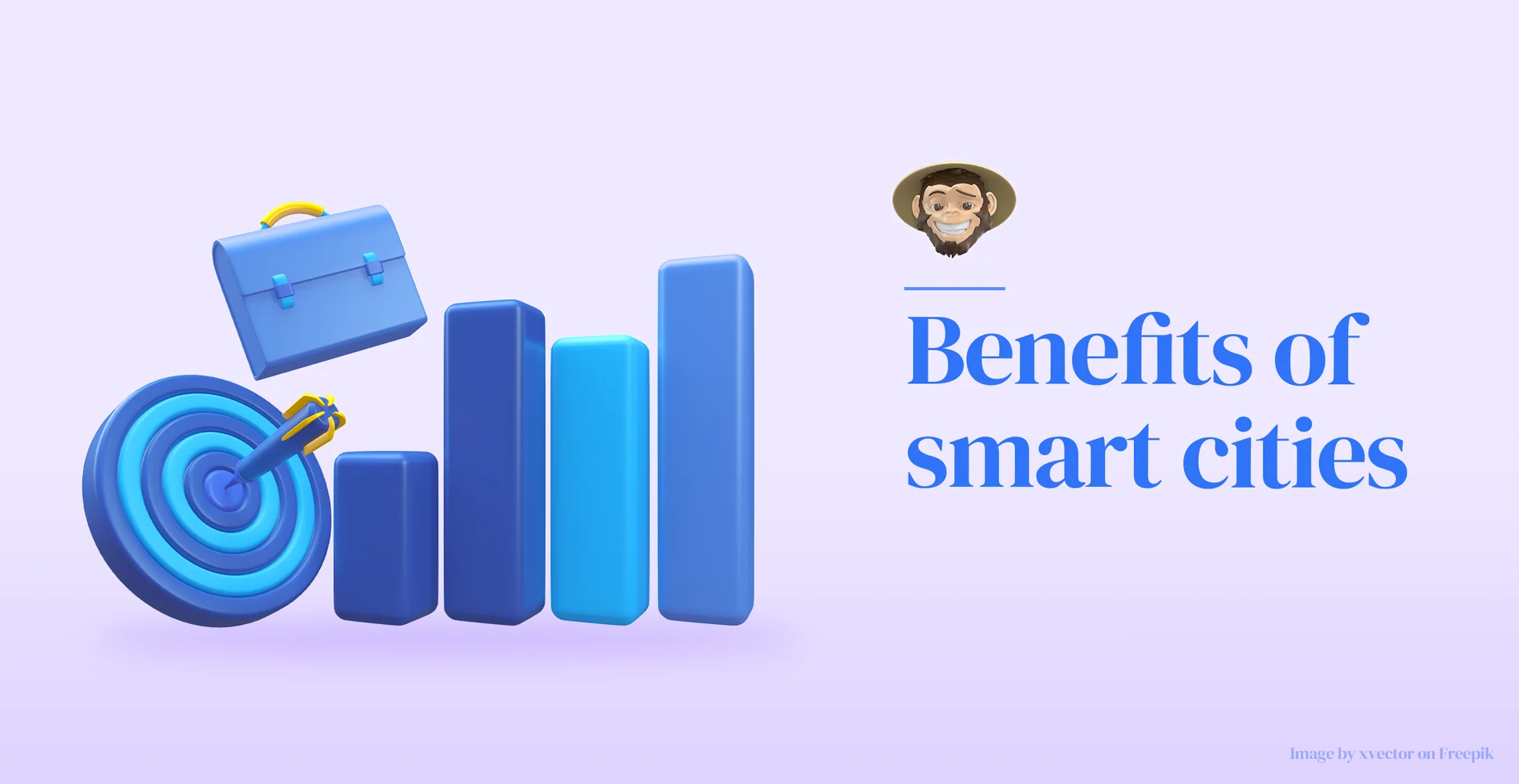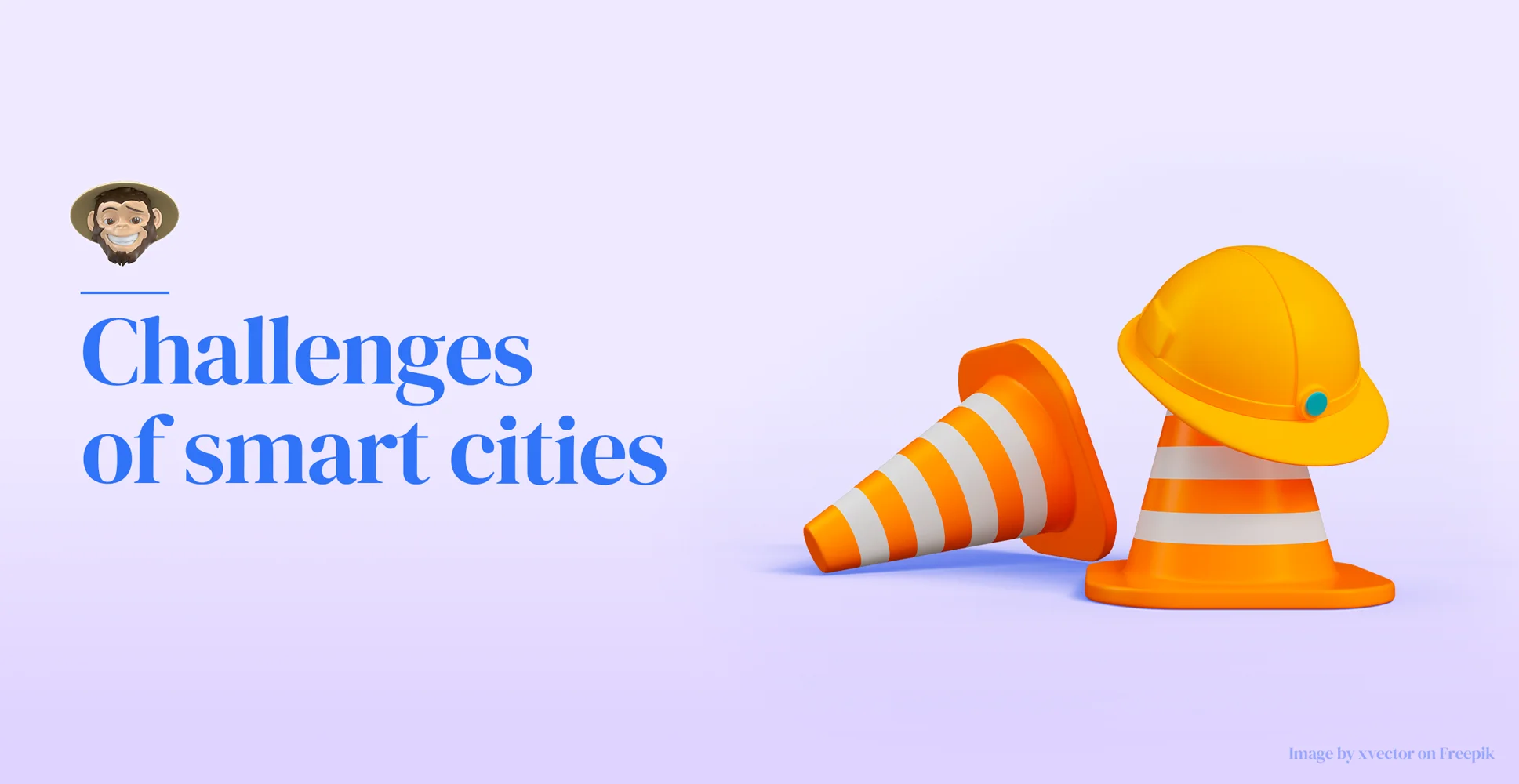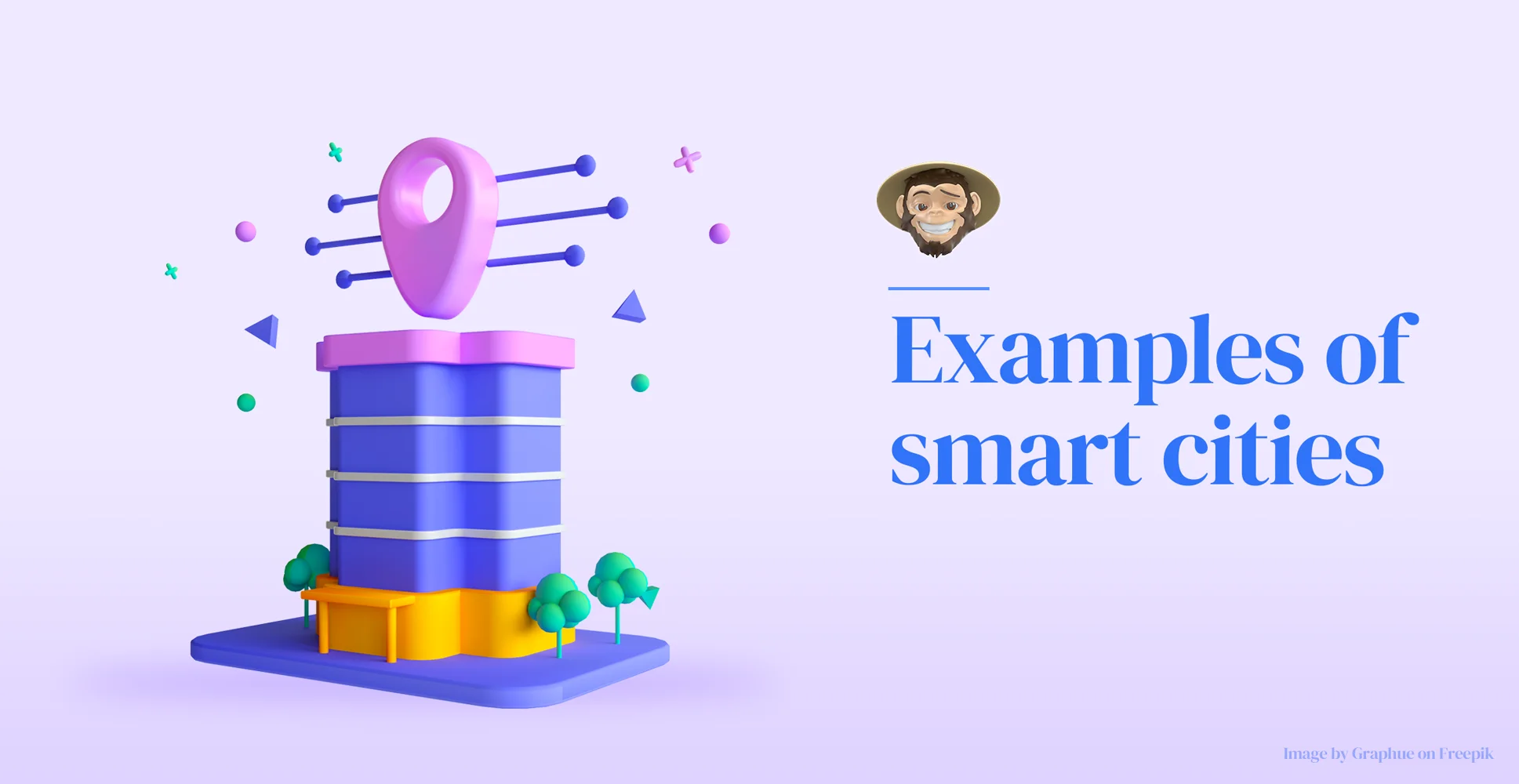Cities around the globe are growing rapidly and in need of innovative technological solutions that allow them to remain sustainable, safe, responsive, and resilient.
We’ve just started rolling into the year 2024, and technology keeps advancing at increasingly staggering speeds. From the most straightforward, commonplace gadgets and devices we use daily to intelligent hospitals, schools, and even vehicles, the constant evolution of technology is relentless. These advancements have helped accelerate the march of progress to the point where even urban landscapes are now evolving into intelligent, interconnected ecosystems that leverage the principles of sustainability, technological innovations, data, and much more to take a step toward the future. These hubs of technological brilliance, known as smart cities, are becoming essential for governments, institutions, and local leaders to keep up with the evident growth that their cities are experiencing. Although not negative, this growth does pose specific challenges that only technological innovation can help stakeholders address and solve, ensuring they can keep providing critical services, such as public safety and emergency response, adequately.
In this article, we’ll delve into the fascinating realm of smart cities, unraveling the main concepts, intricacies, potential, and challenges that can come with merging technology and innovation with urban development to transform how we live. Buckle up because here we go!

What are smart cities?
Did you know that more than 55% of the world’s population lives in urban areas today? That’s around 4.5 billion people who preferred to thrive–or at least attempt to thrive–in the beautiful chaos that defines modern cities. Those figures in and of themselves aren’t an issue; what’s concerning is that, in some cases, this growth comes with a strain on city resources and sustainability and infrastructure challenges that, as urban population numbers keep shooting up, leaders and other stakeholders must address. Thankfully, as a response to these and many other challenges, governments worldwide are embracing technology, and smart cities are becoming the key to unlocking urban progress and sustainability.
We can easily define smart cities as urban settings that use data and technology to operate efficiently. While that definition is accurate, it is too reductive. Yes, smart cities are advanced urban environments where digital technologies take center stage in the development of sustainable living. Still, they’re also innovation hubs where citizen intelligence drives all tech initiatives, and genuine innovation comes from the successful partnership between humans and machines. In other words, cool gadgets and advanced infrastructure won’t do anything if there isn’t a practical cooperation between companies, citizens, governments, academia, and machines.
Smart cities also leverage data-driven solutions to enhance the efficiency, sustainability, and accessibility of countless public and private services and other resources while engaging citizens, meeting their needs, and enhancing the overall quality of life of their residents. Ultimately, the goal here is to develop a sort of humanizing technology that weaves into urban living and helps people create a more sustainable, connected, responsive, inclusive, and intelligent urban ecosystem.

The main pillars of smart cities
Smart cities don’t happen by chance. Regardless of how many technological implementations an urban setting has, its development as a smart city is inherently anchored on several key pillars that determine how to integrate technology and data to enhance urban living. Here are the main pillars of smart cities.
1. Information Communication Technology (ICT)
Information Communication Technology is an umbrella term that encompasses all the technologies used to handle, manipulate, and transmit information. It is the backbone of smart cities and includes every device and tech used to handle telecommunications, broadcast media, audio-visual processing, and other data transmission systems.
For smart cities, ICT is critical because, for one, it allows for countless data-processing operations and allows stakeholders to leverage big data analytics to make informed decisions, identify trends, and predict future requirements, all of which are essential for innovation and tech-driven processes. Second, ICT is pivotal in enabling IT-based infrastructure systems such as intelligent buildings, waste and traffic management systems, network-based control protocols, and other monitoring functions inherent to smart cities. ICT also supports the development of smart grids, which are essential for optimal energy distribution, energy demand management, and the efficient integration of renewable energy sources.
Lastly, ICT improves all citizens’ quality of life by enabling the integration of different technologies to support innovative, efficient, and sustainable urban environments.
2. Sustainability
Sustainability is a critical aspect of smart cities because it ensures that all urban development initiatives always meet the needs of the citizens of the present without compromising how future generations can meet their own. As you already know, smart cities focus on the well-being of both the environment and its citizens, and sustainability is critical to help stakeholders achieve that. In that sense, keeping sustainability at the forefront helps smart cities prioritize the use and development of energy-efficient technologies and renewable energy sources that help them optimize the overall levels of energy consumption of the city, contributing to resource conservation.
Sustainable smart cities also make sure to implement robust measures to reduce their carbon emissions by promoting the use of public transportation, hybrid vehicles, and clean energy sources and implementing policies to educate citizens about how they can minimize the environmental impact of their urban activities. Moreover, sustainable smart cities leverage technology to create advanced waste management systems that help stakeholders build optimal collection routes, reduce landfill waste, conserve water resources, and encourage responsible consumption.
3. Smart infrastructure
Smart cities need the proper backbone to ensure that all the system’s parts function properly; that backbone is an efficient smart infrastructure. A smart infrastructure is pivotal for smart cities because it provides the foundation for technological innovation by integrating advanced technologies and digital solutions into the physical infrastructure components of the city. Adequate smart infrastructure is critical for governments and companies to be able to harness the power of data and connectivity to promote sustainability, enhance service provision to citizens, address challenges, and create an overall more resilient and livable urban environment.
4. E-governance
Apart from technological implementations and infrastructural innovations, smart cities also need the proper apparatus to oversee how all the elements operate and facilitate the delivery of all the benefits of smart urban living to citizens. This all-seeing eye is often referred to as e-governance. E-governance, or electronic governance, refers to using information and communication technologies to streamline how governments deliver their services to citizens and other stakeholders. In the context of smart cities, e-governance is pivotal to improving the efficiency of governmental operations and facilitating communication between the government and citizens. To accomplish that successfully, e-governance needs digital tools and platforms such as mobile applications, websites, social media, and other electronic means to transform traditional governance structures and processes and make them more accessible and convenient.

Benefits of smart cities
As you can probably guess by now, smart cities bring forth a multitude of benefits for their citizens and the world. By leveraging the undeniable perks of modern technologies and relying on efficient data-driven solutions to enhance the quality of life, smart cities can help improve urban services and contribute to a more sustainable planet. Here are some of the most prominent benefits of smart cities.
1. Data-driven knowledge and decision-making
Since smart cities leverage data collection and analysis techniques to generate vast amounts of data to drive decision-making processes, they can use elements such as real-time monitoring to draw valuable insights. These insights are essential to making data-driven decisions that allow more efficient communication with citizens, urban planning, resource allocation, and policy formulation.
2. Improved resource management
Smart cities are known for their unparalleled ability to deploy effective resource management solutions such as smart grids and energy management systems to ensure resource conservation, optimize energy consumption, minimize waste, and even promote and educate citizens on the use of renewable energy sources, contributing to the city’s energy efficiency and sustainability.
3. Economic growth
Economic growth is an unavoidable and often multifaceted outcome of integrating modern technologies and data-driven solutions into urban systems. The fact that smart cities leverage technological innovation to drive processes and service delivery makes them highly attractive for investment opportunities, drives progress, creates new job opportunities, stimulates research and development of more advanced technologies, and fosters innovation. It can also lead to increased tourism, heightened real estate activity, optimized transportation systems and logistics, and can encourage the birth of startups, all of which inevitably stimulate economic growth.
4. Resilience to adversity
Of course, no matter how innovative and advanced they might be, smart cities also face challenges and adversity. However, thanks to their nature, they are better equipped to respond to said adversity and are more likely to effectively overcome and recover from challenges such as natural disasters, blackouts, security threats, and pandemics, to name a few.

Challenges of smart cities
While we can’t deny the myriad of benefits provided by smart cities, the reality is that, as of right now, they also face several challenges we must understand and overcome. Here are some of them.
Implementation costs
As is the case with most large-scale technology implementation processes, the deployment of the smart infrastructure, grids, and technologies needed to power smart cities adequately involves significant upfront costs that not all governments and stakeholders can afford.
Citizen engagement
As we mentioned earlier, active citizen and community participation and engagement are critical to the overall wholesomeness of the concept of smart cities. However, in some cases, governments can meet specific resistance when engaging citizens, especially older people and those with limited technological knowledge.
Interoperability
Smart cities include a myriad of devices and platforms that often need standardized protocols to be able to communicate among them and promote interoperability within the smart city’s network. However, there are still challenges when it comes to implementing these standards and ensuring the seamless functioning of innovative city ecosystems.
Addressing these and many more challenges we didn’t include here requires a holistic approach where governments, authorities, citizens, companies, and other stakeholders collaborate to help smart cities grow and adapt to create successful, technologically advanced, highly livable, and sustainable urban environments.

Examples of smart cities
Currently, several cities have embraced innovative technologies and are aiming at smart urban living. They have successfully integrated smart technologies to improve the quality of life, sustainability, and efficiency of their urban environments and have been agile enough to address and solve the specific challenges that have risen in their context. Here are some examples of smart cities.
- Singapore
- Oslo
- New York
- Copenhagen
- Seoul
- Tokyo

Closing argument
As the world grapples with environmental challenges, the need for more sustainable and resilient urban units has become too pressing. Smart cities have emerged to offer a transformative approach to how we conceive urban living by leveraging technological advancements to promote sustainability and long-term viability, enhance the quality of life, help the government make data-driven decisions, improve medical outcomes, better resource utilization, enhance tourism, and overall enhance the efficiency of all urban services. Still, challenges are manifold and cities worldwide, no matter how big or small, will need to learn to grow and adapt to emerging technologies and collaborate to successfully enhance citizen well-being and contribute to a more resilient and equitable urban future.
Here at Foonkie Monkey, we strive to remain at the forefront of technological advancements, and we love to build mobile and software applications that add value to users’ lives. So, if you have any questions regarding smart cities or want an experienced team like ours to work on your new app, get in touch! We’re more than happy to help.
